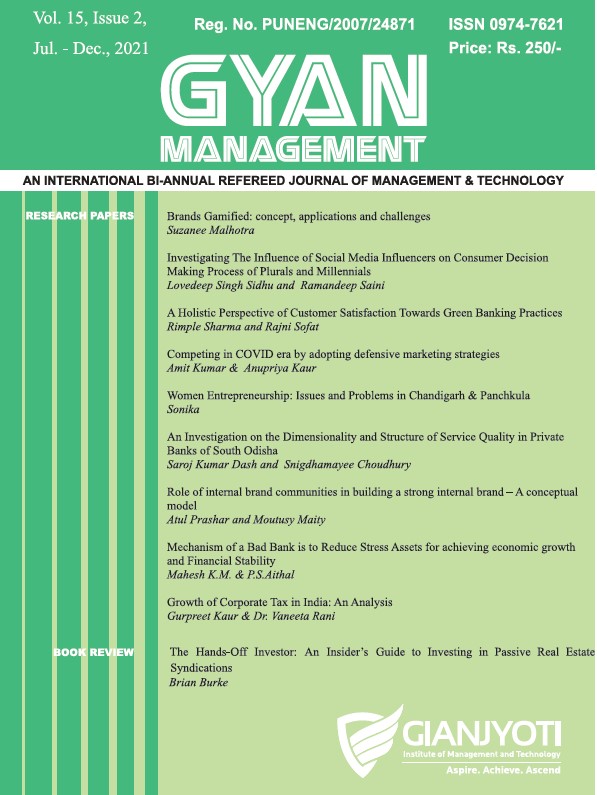Growth of Corporate Tax in India: An Analysis
DOI:
https://doi.org/10.48165/gm.2021.1529Keywords:
Corporate tax, Buoyancy, Growth, Revenue, TaxationAbstract
The direct tax contributes as a major source to the total tax revenue of the government. The biggest component of the direct tax, as well as total tax revenue of the government, is the Corporate Tax as it contributes around 1/3rd of the gross tax revenue of the government. So, it is very important to study the concept of corporate tax, growth in corporate tax revenue, growth in corporate assessees known as tax base, and the corporate tax to gross domestic product (GDP) relationship. The present study throws light on the growth perspective of corporate tax revenue and growth of corporate assessees in India. The corporate tax buoyancy has also been discussed in the paper to know the responsiveness of corporate tax revenue in comparison to the (GDP) of the country. The study has covered the period of 18 years from 2001-02 to 2018. The data has been taken from economic survey reports and the official websites of Income Tax, and Comptroller and Auditor General of India. The analyses of collected data have been carried out by using percentage, simple growth rate and compound annual growth rate.
Downloads
References
Ahmed, Q.M. (1994). The Determinants of Tax Buoyancy: An Experience from the Developing Countries. The Pakistan Development Review, 33(4), 1089-1098.
Ambirajan, S., (1964). The Taxation of Corporate Income in India. Bombay: Asia Publishing House. pp3 & 120.
Bayu, T. (2015). Analysis of Tax Buoyancy and Its Determinants in Ethiopia (Cointegration Approach). Journal of Economics and Sustainable Development, 6(3), 183-194.
Clausing, K. A. (2014). Corporate tax revenues in OECD countries. International Tax and Public Finance, 14,115-133.
Gemmell, N., Kneller, R. and Sanz, I. (2009). The Growth Effects of Corporate and Personal Tax Rates in The OECD. Retrieved from https://www.researchgate.net/ publication/277288282_The_Growth_Effects_of_ Corporate_and_Personal_Tax_Rates_in_the_OECDGhuge, N. and Katdare, V. (2015), Indian Tax Structure- An Analytical Perspective. International Journal in Management and Social Sciences, 3(9), 242-252.
Goyal, S. K. (1988). Nature and Growth of the Indian Corporate Sector. Institute for Studies in Industrial Development, New Delhi Krushna, A. V. (2015). Tax Buoyancy of India: An Empirical Analysis. International Journal of Research in Management, Economics & Commerce, 5(12), 46-55.
Lavand, N.R. (2016). A Study of Income Tax Revenue and Buoyancy in India since 1991. (Unpublished doctoral thesis). Department of Economics, Dr. Babasaheb Ambedkar Marathawada University, Aurangabad. Singh, P. (2019). Tax Revenue in India Trends and Issues. The Institute for Social and Economic Change, Bangalore Working Paper 448.
Upender, M. (2008). Degree of Tax Buoyancy in India: An Empirical Study. International Journal of Applied Econometrics and Quantitative Studies, 5(2), 59-70. https://www.incometaxindia.gov.in/Documents/
Downloads
Published
Issue
Section
License
Copyright (c) 2022 Gurpreet Kaur, Vaneeta Rani

This work is licensed under a Creative Commons Attribution-NonCommercial-NoDerivatives 4.0 International License.



